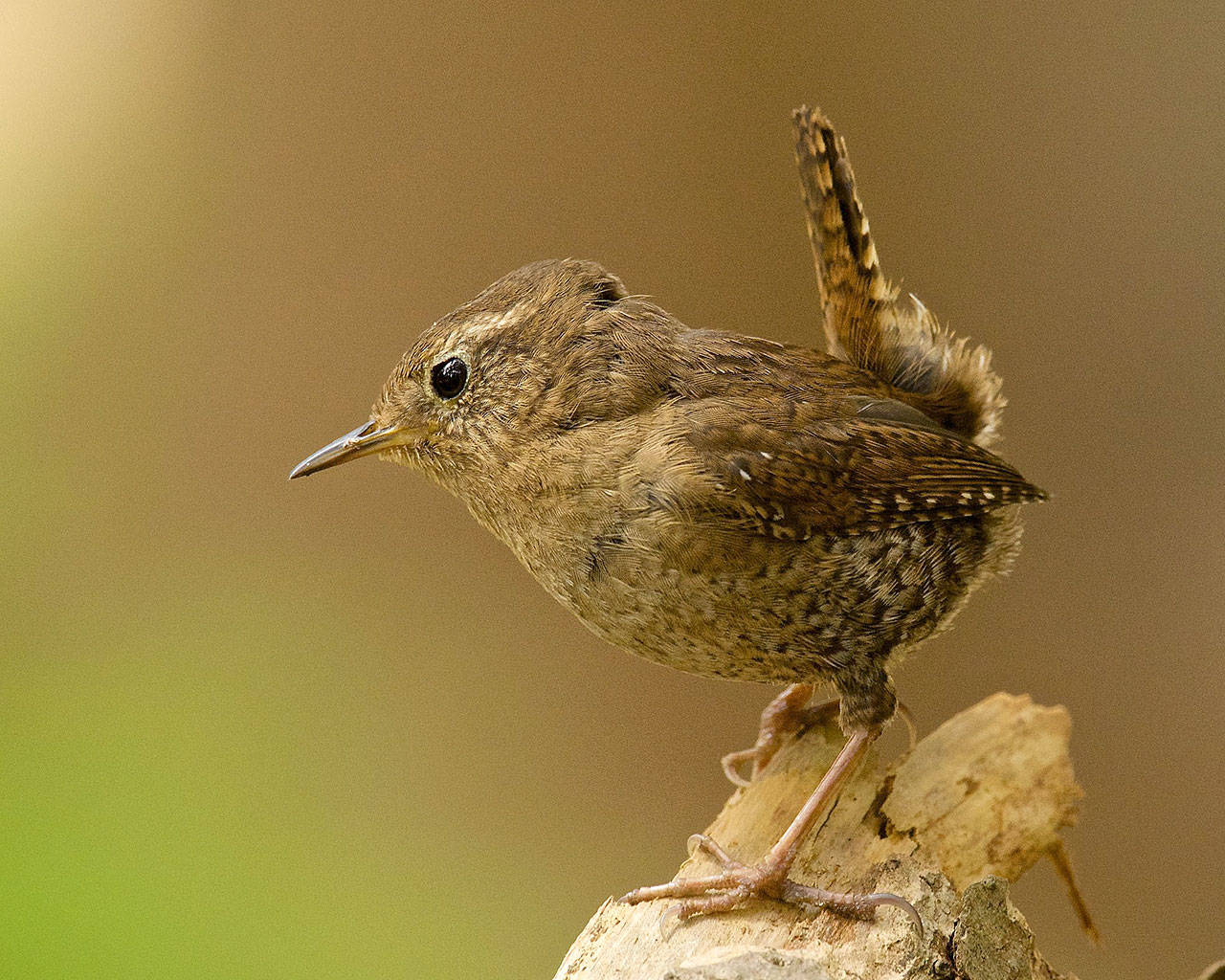If there were a “Cutest Bird” title, this little bird would win hands down. How can you look at that perky little thing and not smile? Add the rich and diverse song and you have a sure winner in the avian kingdom. This bird is hard to photograph due to its small stature and its penchant for flitting rapidly from spot to spot, so Gregg Thompson’s photo is a real winner in my estimation.
General Description: Until 2010 this bird was known as a Winter Wren. It was discovered to have some differences in DNA from its eastern North America cousin which was renamed the Eastern Wren, while this bird became a Pacific Wren. At a mere 3.1 to 4.7 inches in length, with a wingspan of 4.7 to 6.3 inches, and weighing just 0.3 to 0.4 ounces, this is a very small bird but with a very powerful voice. In my humble opinion there is no native bird song so sweet and melodic as a Pacific Wren, and once you hear it you will not forget. Finding the singer though can be a problem as they usually hide deep in the brush. The best way to find it is to walk or drive slowly with the windows down in the vehicle hoping to hear the song. The song is a long trilling piece, full of joy I think. If you hear it, pull over or sit quietly and wait. You may get to see the singer. A small, round shape in brown, mottled plumage with a short brown tail with black horizontal stripes, cocked upwards. The stripes are also found on the wings and breast and there is a pale eyebrow. The plumage may be a bit drab but it is a most charming bird.
Habitat: The Pacific Wren is a bird of the closed canopy, mostly evergreen forest at all elevations, with dense understory, brush piles, fallen logs, and nearby streams. In winter they often move into parks and gardens, around the edges of mixed vegetation. I see them most often on my wood pile.
Behavior: Pacific Wrens move rapidly from spot to spot, gleaning prey off leaves, branches and bark, often bobbing up and down as though unable to stand still.
Diet: Insects such as beetles, caterpillars and ants, as well as spiders, bees and flies are the main source of protein. In the non-breeding season they also eat juniper berries.
Nesting: Males establish and defend the breeding territories and attract females by singing, of course. The male also chooses the nest site and builds the nest himself in natural cavities or upturned roots near streams, in decaying logs, under porches and in old woodpecker holes. He lays down a platform of twigs, moss, bark, rootlets and grass or other plant material. The female helps line the nest with animal hair and feathers. She incubates five to six eggs for 12 to 16 days. Meanwhile, the male may be off starting another nest with another female, but he still manages to help with the feeding. Both parents feed the young, then support them when they leave the nest after about 19 days.
Migration: Most Pacific Wrens are year-round residents, but the birds from colder parts of the state may drop down into lower elevation or they scatter throughout the west.
Conservation Status: This is the only wren found in the Old World, where it is known simply as “The Wren”. In the state of Washington, numbers are declining, probably due to loss of habitat — the deep forest and understory.
Where and When to Find on Grays Harbor: The Pacific Wren is a common resident on Grays Harbor except for December when it doesn’t appear as often but it’s still here. You just have to look and listen more. If you have a favorite patch of dense forest, with maybe a creek or river nearby, park your car nearby if you can or sit on a nearby log. Or check out a nearby wood pile, an old tree or log. The wait will be worth it, I promise.


